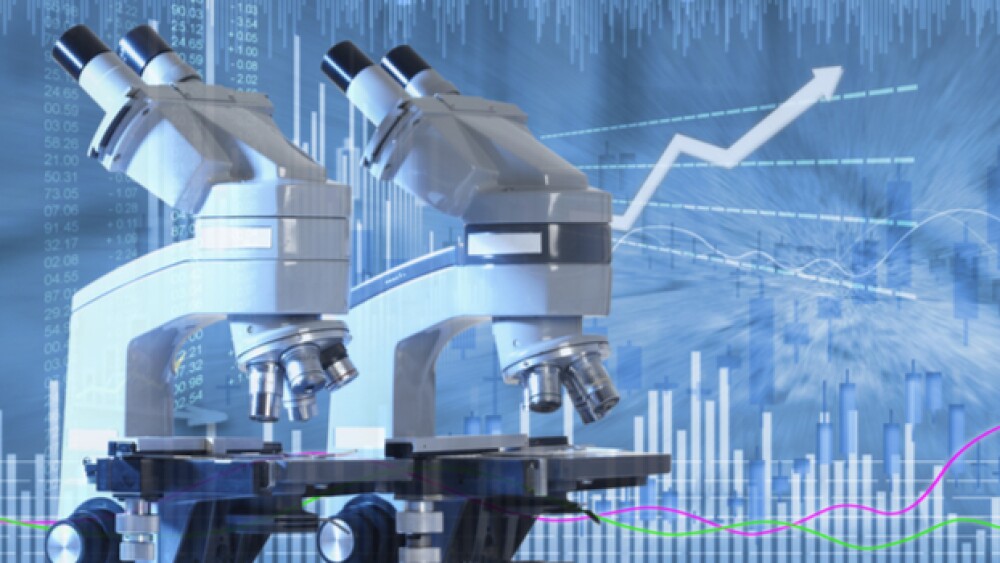Perhaps unsurprisingly, the average cost of developing new drugs is very high. For pharmaceutical companies that are developing multiple drugs, the R&D costs can average around $5 billion.
Perhaps unsurprisingly, the average cost of developing new drugs is very high. For pharmaceutical companies that are developing multiple drugs, the R&D costs can average around $5 billion. This is concerning for pharma companies, especially considering that returns on R&D are the lowest they’ve been in the past nine years.
However, there are more investments needed for drug development other than pure cash, and these investments need to be taken into account as well. Time, money, and the quality of development are the three things that every biopharma company must balance in order to stay profitable. Luckily, there may be some new advancements and changes on the horizon that could help with this careful balance by improving overall quality and reducing costs.
- Big data
The term “big data” simply refers to very large sets of data that requires a data-processing application to analyze fully. Once this data is analyzed, it can reveal many interesting statistical patterns and associations that would be helpful for those in biopharma R&D.
Through the right use of big data analyzation, biopharma companies could see not only more efficient drug development, but also more effective treatments that are personalized to target specific sections of the population rather than developing a single drug to treat everyone.
Personalized medicine, in particular, has become a big focus for those in the biopharma industry the past few years as these treatments are incredibly effective and lead to better outcomes in patients, thus meaning more successful drugs can be developed.
Along with personalized treatments, big data can help with almost every facet of drug R&D. The benefits include finding new targets for treatment, validating mechanisms of action, providing more information on safety, predicting the effects the medicine will have, and much more.
- Automation
One of the biggest things making the news as of late is how automation is going to drastically and permanently alter all kinds of industries. This will be no different for biopharma, and in the not-too-distant future, the drug R&D landscape may be forever changed.
Specifically, automation will make drug development much faster and more efficient by freeing up researchers’ time and automating a lot of the regular processes and menial routines in the lab. Robots will be able to handle and transport liquids and run tests, and scientists will have more free time to focus on design and deciphering test results. This is something that many biopharma companies are already investing in and they will only increase this investment in the coming years as automation grows more sophisticated.
According to the CEO of HighRes Biosolutions, Peter Harris, automation not only helps cut costs and speeds up drug development, but the data that it captures is more accurate and higher quality than with humans doing the work. This translates to fewer mistakes made during the research process and better results overall.
- Patient engagement
One of the biggest changes throughout the field of medical research as of late has been patient engagement. Like other parts of medicine, patient engagement has already started making big changes for biopharma companies.
There is even an entire movement around patient engagement that is spearheaded by patients like Dave deBronkart, along with many physicians, researchers, and others in the medical field who also are in favor of more patient engagement.
So, it’s clearly a big deal, but how is patient engagement changing the way biopharma approaches research?
By implementing more and more patient engagements, not only do researchers help improve trust and involvement with patients, but they also streamline the R&D process in multiple ways. This includes making patients more eager to join clinical trials and give feedback, getting a better insight into the full effects of the drug and how it is impacting the patient, and discovering relevant designs for medication that patients would find useful. All of these help speed up the drug discovery and development process as well as reduce costs by improving the clinical trial process.
Despite all of these advantages, patient engagement is still a low priority during clinical trials and biopharma companies are taking a while to pick up on this trend. However, companies are still slowly adapting to it and it may not be long until it’s a standard procedure for every company’s R&D.





